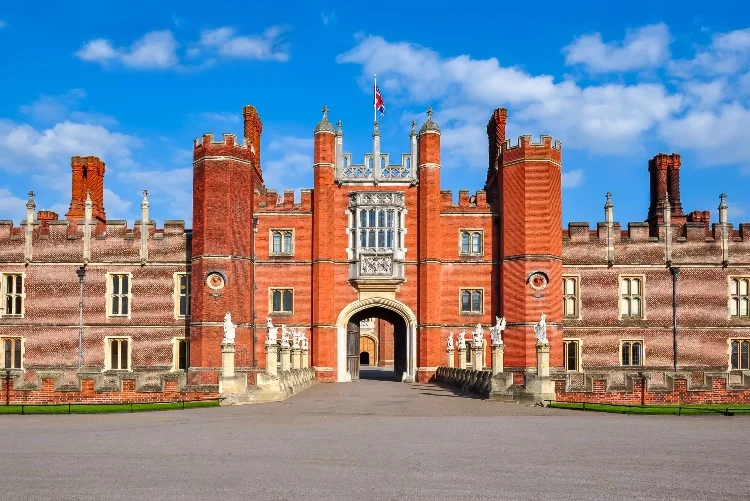
Tudor architecture marks a pivotal moment in English history, blending elements from the past with innovative ideas. It actually also comes with an interesting story. It began in 1515 when Cardinal Thomas Wolsey, a powerful figure who rose from humble beginnings to become King Henry VIII’s closest advisor, undertook the construction of Hampton Court Palace. Wolsey envisioned it a residence for himself so grand it would surpass even the King’s. His ambitious project not only reflected his influence but also laid the foundation for a new architectural style that would shape the Tudor era.
Power is a fickle thing; when Wolsey fails to secure Henry’s divorce from Catherine of Aragon, his downfall is swift. In 1529, Henry VIII seized Hampton Court and expanded the palace by adding the Great Hall and other royal touches. The palace became one of the most iconic symbols of Tudor England. Also, in a way, a testament to both the rise and fall of a man who dared to dream too big.
Origin of Tudor Architecture
While Wolsey was instrumental in shaping Tudor architecture, it’s more accurate to see him as a patron who worked closely with architects and builders to create the iconic style we recognize today. Tudor architecture began in England during the late 15th century, evolving as the country transitioned from the medieval Gothic style to the early Renaissance. Named after the Tudor dynasty, which ruled from 1485 to 1603, the style emerged as England found political stability after the Wars of the Roses. This period of relative peace under Henry VII allowed for architectural innovation. So, they ended up creating spatial collages with the Gothic and Renaissance eras.
It was a time for peaceful living, or so they say, therefore, the shift toward Tudor architecture is often credited to the construction of grand manor houses and palaces that combined medieval defensive features with more comfortable and ornate elements. Key figures like Henry VII and his architect, Sir Reginald Bray, were crucial in pioneering this style, especially through projects like Richmond Palace and other royal residences.
Style of Tudor Architecture
Aside from drawing influence from the Gothic and Renaissance eras, Tudor architecture developed its own recognizable style. Its core design philosophy emphasized a balance between functionality and aesthetic appeal, with a focus on craftsmanship and the use of locally available materials like timber and brick. Another significant change during this period was the introduction of brick as a primary building material instead of traditional stone.
Key Identifying Features:
- Half-Timbering: Exposed wooden frames with spaces filled with plaster or brick, creating a distinct grid pattern on the exterior.
- Steeply Pitched Roofs: Often with multiple gables, these roofs were both practical and visually striking.
- Tall Chimneys: Elaborate, decorative chimneys are a hallmark of Tudor buildings.
- Casement Windows: Narrow, tall windows with leaded glass, often arranged in groups and framed with wood or stone.
- Ornate Doorways and Arches: The use of Tudor arches, which are flatter than Gothic arches, often framing the main entrances.
- Brick and Stonework: A mix of brick and stone was used, particularly in more affluent structures, showcasing the transition to Renaissance styles.
Relationship to Other Architectural Styles
Tudor architecture is an interesting blend of Gothic and Renaissance influences. Gothic architecture, which began in the 12th century and dominated European architecture until the 16th century, left its mark on Tudor buildings with its signature vertical lines, pointed arches, large windows, and detailed woodwork. These elements were originally designed for cathedrals and grand churches then creatively adapted for the more intimate and decorative spaces of Tudor homes.
As the Gothic style gradually faded, the Renaissance emerged in Italy during the 14th century and spread across Europe, bringing with it a fresh focus on symmetry, proportion, and classical motifs like arches and pilasters. Tudor architecture embraced these Renaissance ideals, especially in the use of brickwork and the introduction of classical elements that harmonized with the Gothic verticality.
This combination of Gothic and Renaissance resulted in a transitional style that bridged the gap between the medieval and modern worlds. Tudor style also laid the groundwork for the more ornate Elizabethan style that followed, a style characterized by its intricate designs and even greater emphasis on symmetry and grandeur. Basically, they wanted their homes to look and feel as great as Gothic churches and as perfect as Renaissance structures. It tells you a lot about the Tudor era. It was a fun experiment that didn’t look so bad, rather a fascinating display of humanity’s endless pursuit of greatness.
Notable Tudor Architecture Examples
Richmond Palace (1497-1501)
Richmond Palace was one of the most magnificent royal residences of the Tudor period built by Henry VII, with input from Sir Reginald Bray, on the site of an earlier royal palace. The extensive use of red brick was innovative for the time, giving the structure a warm, vibrant appearance. Its large, ornately mullioned windows allow natural light to flood the grand interiors, which were adorned with rich tapestries and decorative woodwork. The entrance, marked by a grand gatehouse, featured intricate Tudor arches and heraldic carvings. Though much of the palace was demolished after the English Civil War, its architectural legacy remains a defining example of the grandeur of Tudor royal residences.
Hampton Court Palace (1515-1521)
As we opened up this article, Hampton Court Palace was originally built for Cardinal Wolsey and later claimed by Henry VIII; it laid the foundation for Tudor architecture. The palace’s red brick exterior is exaggerated by elaborately-decorated chimneys, an element which later became a hallmark of Tudor design. The grand entrance is framed by a grand arch, leading into a series of courtyards surrounded by buildings with intricate bay windows and crenelated parapets. The Great Hall, with its hammer-beam roof and large stained-glass windows, reflects Gothic influences, while the symmetrical layout of the gardens and courtyards reintroduces the Renaissance’s ideals of balance and proportion.
Sutton Place (1523-1525)
Attributed to Richard Weston, likely working with the royal court’s architects, Sutton Place is an early example of Tudor architecture that features extensive use of brickwork, intricate stone mullions, and decorative chimneys. The building’s facade, made from red brick, is accentuated by intricate stone mullions framing its numerous windows. The use of decorative chimneys, which were both functional and ornamental, adds verticality and character to the structure. The main entrance, with its arched doorway and heraldic details, exemplifies the Tudor style’s attention to detail. Inside, the great hall features a high, timbered roof with a symmetrical layout.
St. James’s Palace (1531-1536)
Erected under the direction of Henry VIII’s court architects, including Sir Thomas Lovell, St. James’s Palace is a quintessential example of royal Tudor architecture. The palace’s red brick construction is characterized by large mullioned windows that illuminate its grand interiors. Octagonal corner towers, capped with crenellations, give the palace a fortress-like appearance while maintaining the comfort and elegance of a royal residence. The entrance gatehouse, adorned with the Tudor rose and royal coat of arms, serves as a powerful symbol of Henry VIII’s reign. Inside, the palace features richly decorated rooms with carved wooden paneling and tapestries, reflecting the wealth and power of the Tudor court.




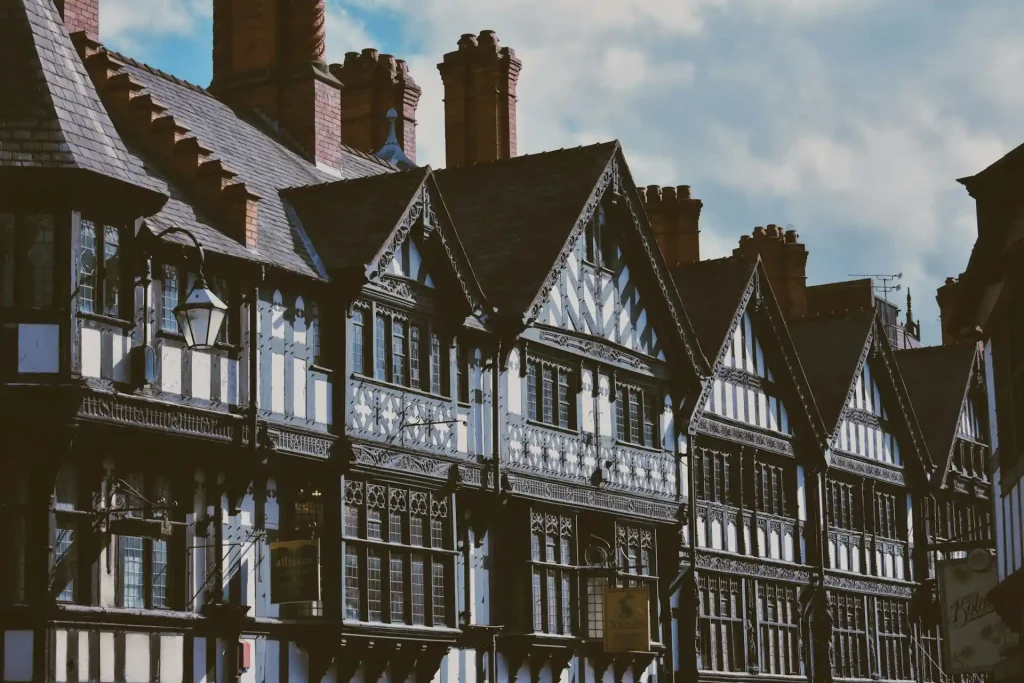
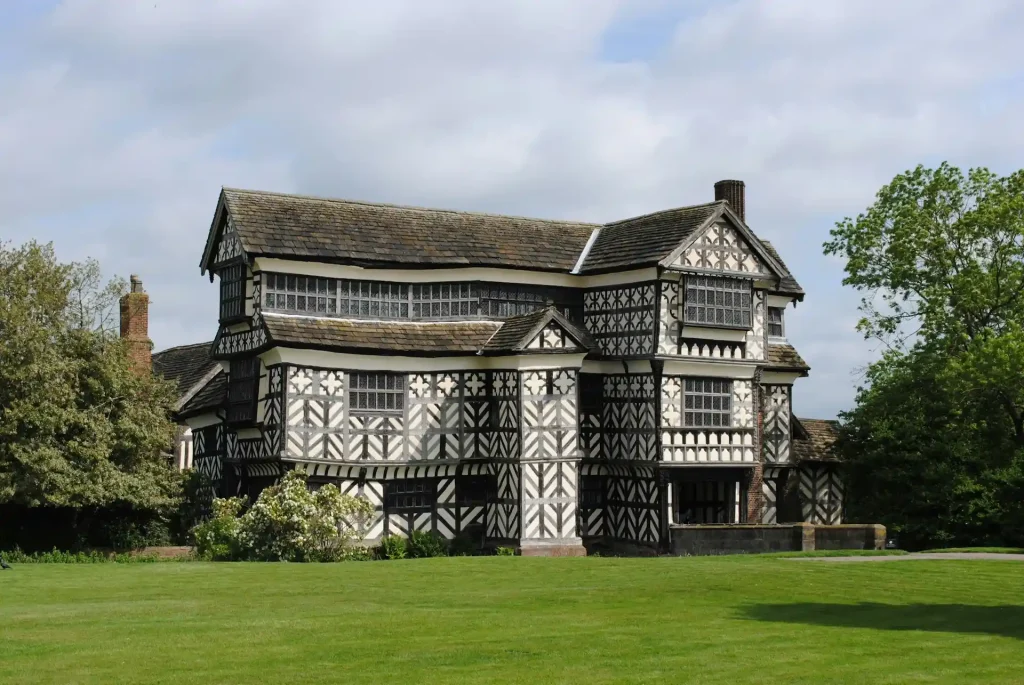
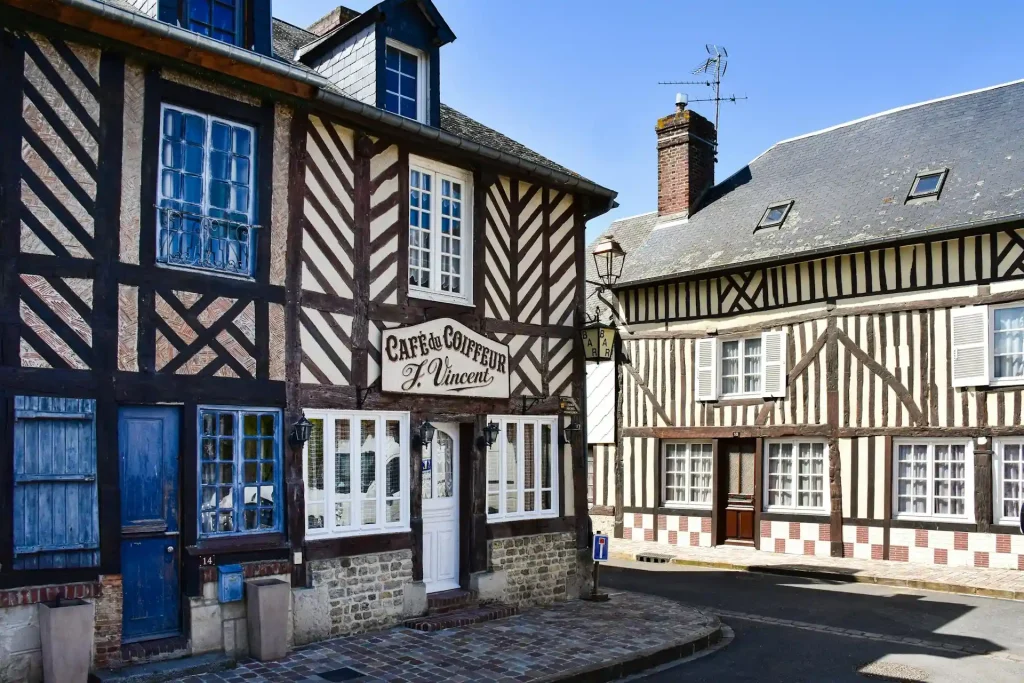
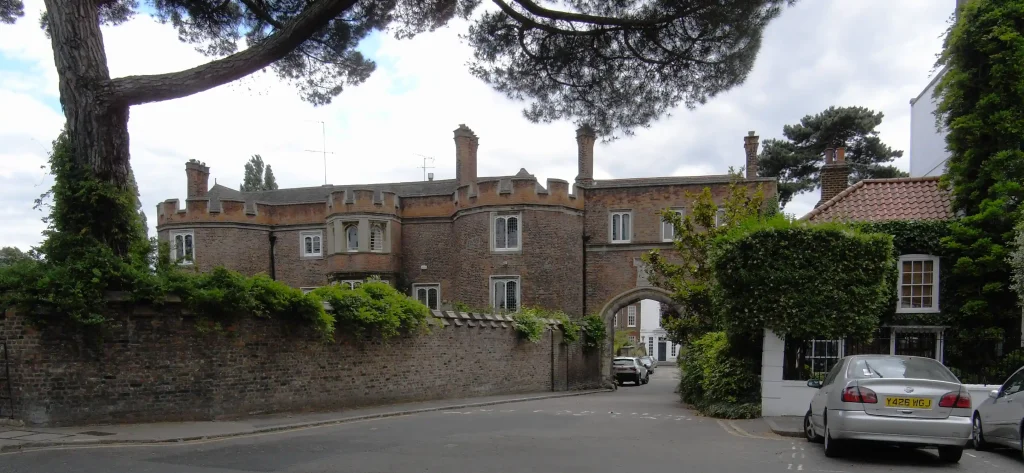
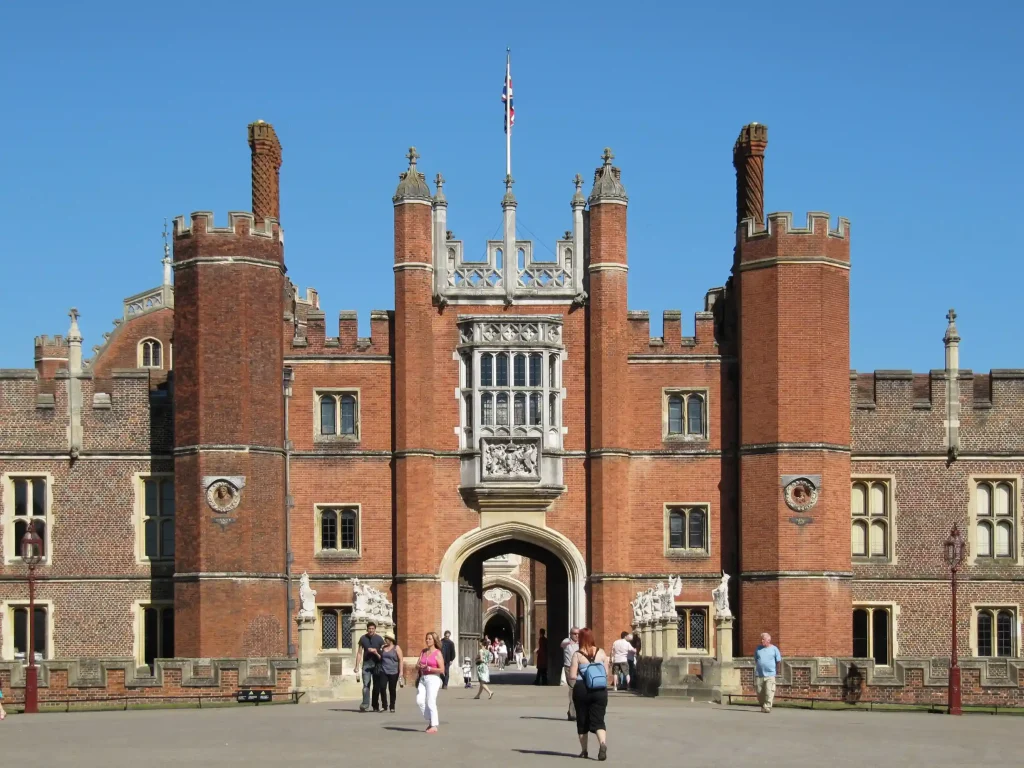
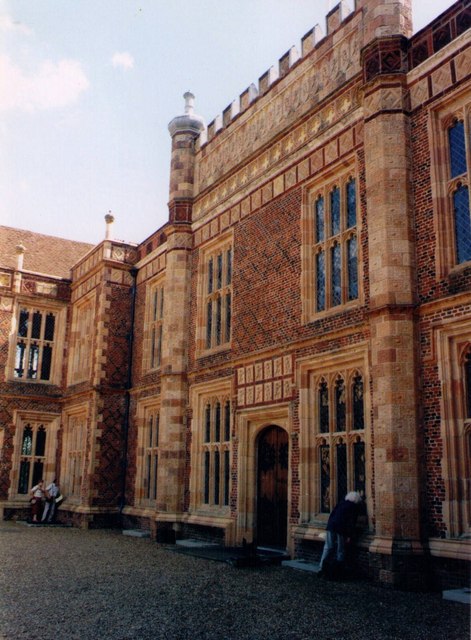
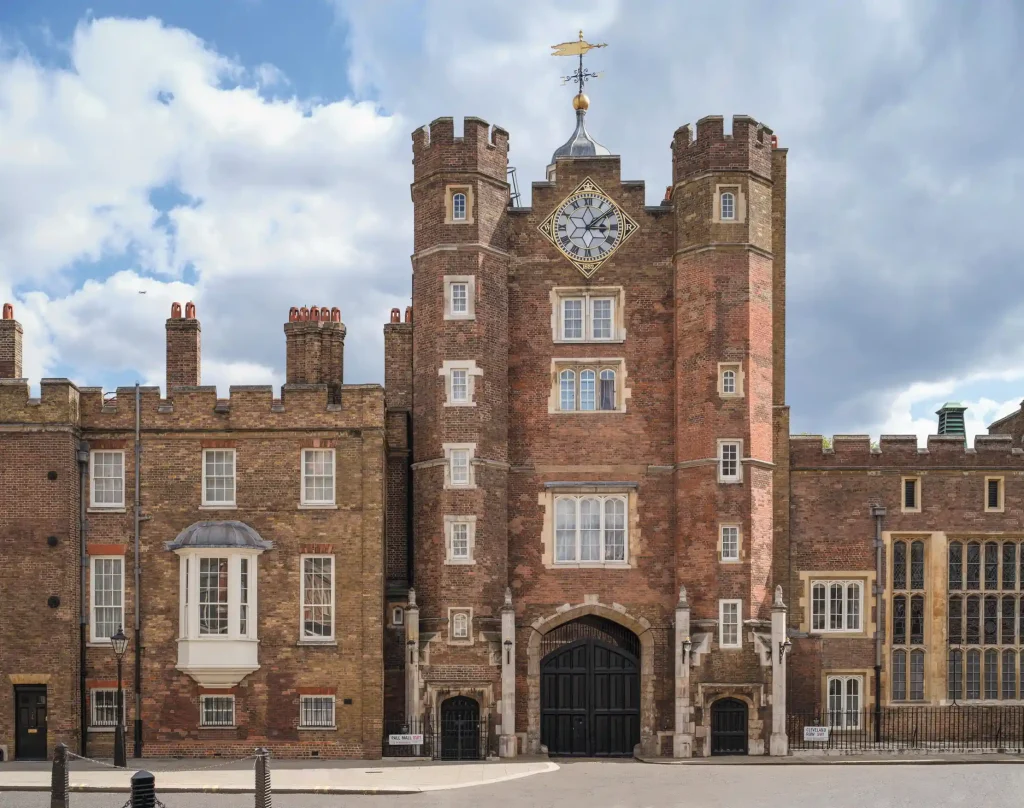




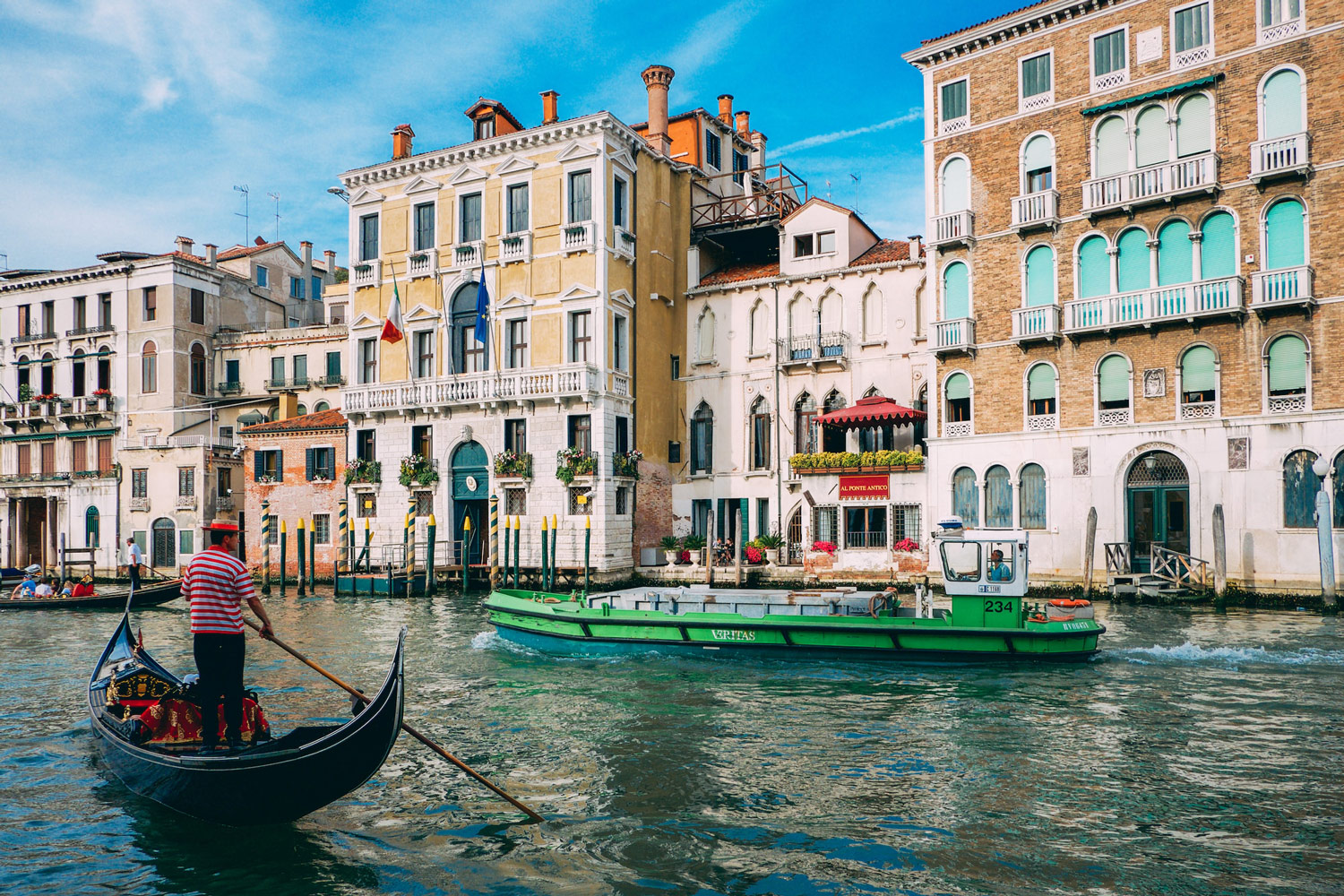









Leave a comment